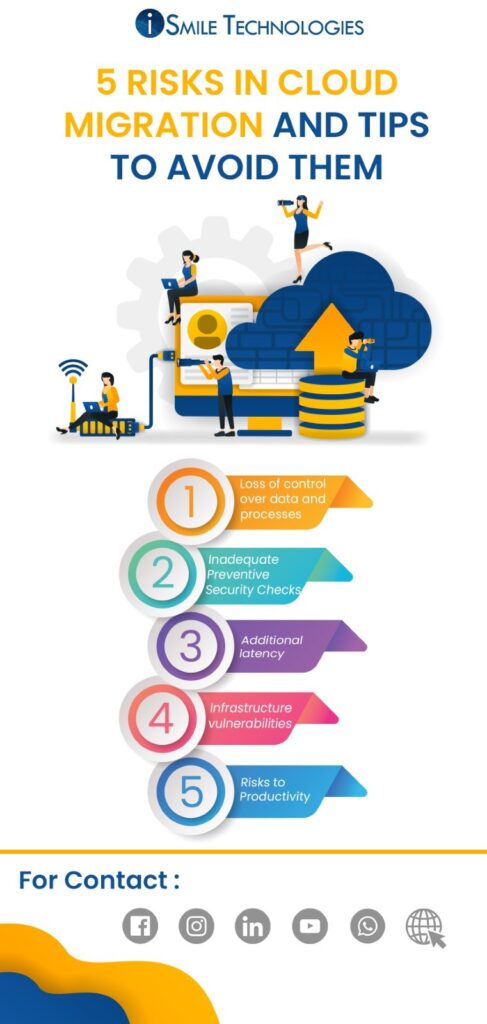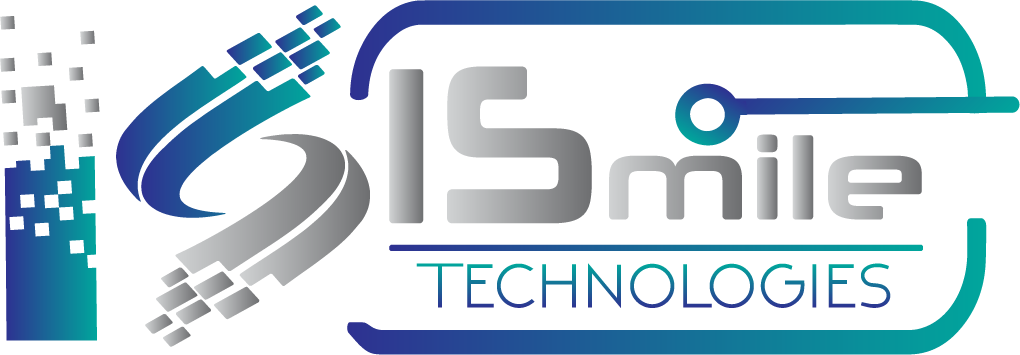To scale software systems effectively, it is considered a cost-effective method to move them to the cloud. Companies can deploy and use applications at a much lower cost thanks to the dynamic distribution of computing capacity.
Still, there are some risks to cloud migration that you should know about before you implement the process. Discover the common risks and approaches to migrating to the cloud:

1. Loss of control over data and processes
Public cloud computing worries many businesses when it comes to transferring their data and applications. With public cloud solutions like AWS, Google Cloud, and Azure, you lose complete control. Even managing your security processes is impossible without an on-premises infrastructure.
Solution
The first step is to change your perception of control. To eliminate cloud computing threats, consider the following:
- Make sure your Identity Access Management strategy is vital. Reduce unauthorized access and accountability by personally restricting user access.
- In addition to protecting data, encryption can also help separate and isolate it. Even with public cloud platforms, this approach can be helpful.
- You should require compliance reports and security monitoring from your vendor.
2. Inadequate Preventive Security Checks
The problem is that most organizations do not have skilled security professionals who can ensure the complete security of migrating your business to the cloud. As a result, vital information can be lost due to the most trivial reasons for the customer (such as uploading malicious data to the cloud or not having good virus protection).
Solution
You may not have the expertise of a specialist to solve all your cloud migration problems. The system administrator will not handle the transfer of your important data to the cloud – they are not technically savvy. The best option is to choose a professional who works with outsourcing. This way, you will get quality support in this matter at an affordable price.
Want a quick & issueless cloud migration?
Our cloud migration experts will help.
3. Additional latency
When it comes to cloud migration risk assessment, one of the most underestimated risks is the risk of unwanted latency. A cloud application, database, or service can cause this. Latency is significant for IoT devices, e-commerce websites, video streaming platforms, and cloud gaming platforms as it contributes to the customer experience. The delay of a few seconds can be detrimental to your business if you have applications that require instant responses.
Solution
To fix latency issues, there are several methods:
- Improve network localization and optimization
- Track traffic flow by segment
- Interconnect multiple clouds
- Outsource the Internet at the edge
- Engage business partners and ecosystems for data sharing and digital commerce.
- For those who cannot use or afford the above methods, it may be a good idea to keep such applications on-premise.
4. Infrastructure vulnerabilities
Migrating to the cloud depends heavily on assessing the infrastructure and preparing it for the new environment. A healthy IT infrastructure impacts the risks of migrating to the cloud and the opportunities that can arise. Migration is more difficult for legacy, outdated systems.
Solution
First, review your infrastructure for vulnerabilities and perform a cloud readiness assessment. Then you can oversee the development of the cloud infrastructure. Another benefit of IaC is that it helps mitigate cloud migration risks because only a portion of the infrastructure is affected.
5. Risks to Productivity
Once the migration is complete, you are on your own. It is the responsibility of your IT team to ensure that everything runs smoothly and threats are averted.
Solution
You can keep up with the competition by using managed cloud services. The platform is maintained and optimized by the provider. They are also responsible for security and protection against cyber threats.

Get in touch with us today to schedule a meeting for your cloud managed services need with one of our Cloud experts. Schedule a Free Evaluation.








